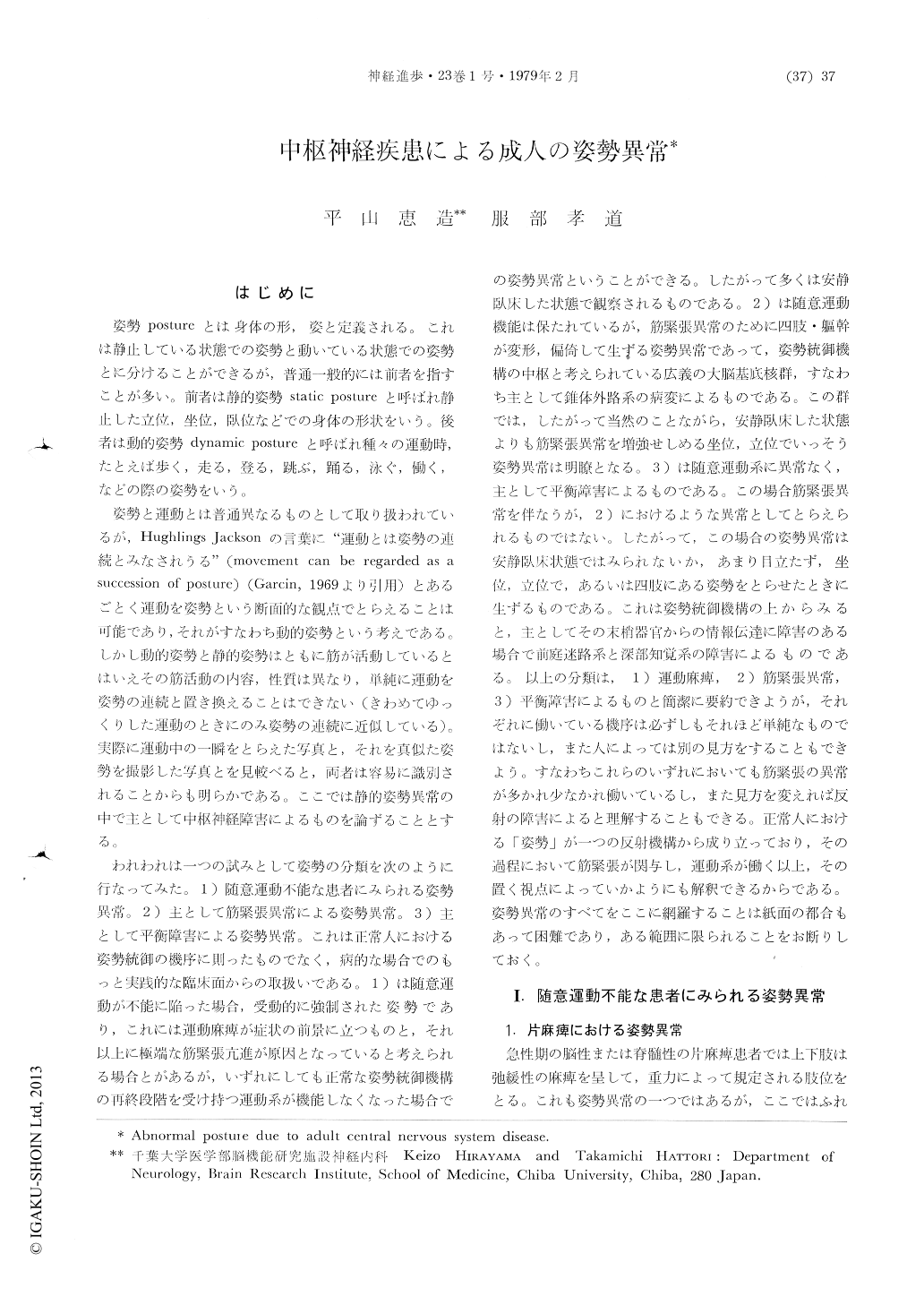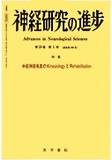Japanese
English
- 有料閲覧
- Abstract 文献概要
- 1ページ目 Look Inside
はじめに
姿勢postureとは身体の形,姿と定義される。これは静止している状態での姿勢と動いている状態での姿勢とに分けることができるが,普通一般的には前者を指すことが多い。前者は静的姿勢static postureと呼ばれ静止した立位,坐位,臥位などでの身体の形状をいう。後者は動的姿勢dynamic postureと呼ばれ種々の運動時,たとえば歩く,走る,登る,跳ぶ,踊る,泳ぐ,働く,などの際の姿勢をいう。
姿勢と運動とは普通異なるものとして取り扱われているが,Hughlings Jacksonの言葉に"運動とは姿勢の連続とみなされうる"(movement can be regarded as asuccession of posture)(Garcin,1969より引用)とあるごとく運動を姿勢という断面的な観点でとらえることは可能であり,それがすなわち動的姿勢という考えである。しかし動的姿勢と静的姿勢はともに筋が活動しているとはいえその筋活動の内容,性質は異なり,単純に運動を姿勢の連続と置き換えることはできない(きわめてゆっくりした運動のときにのみ姿勢の連続に近似している)。実際に運動中の一瞬をとらえた写真と,それを真似た姿勢を撮影した写真とを見較べると,両者は容易に識別されることからも明らかである。ここでは静的姿勢異常の中で主として中枢神経障害によるものを論ずることとする。
Abstract
The purpose of this paper is to describe various abnormal postures caused by central nervous system disease in adult.
We focussed on static posture rather than dynamic one.
The following classification was proposed.
A. Abnormal posture caused by weakness.
1. Hemiplegia. 2. Tetraplegia. i. Decerebrate rigidity. ii. Decorticate rigidity. 3. Paraplegia.
B. Abnormal posture caused by disordered muscle tone.
1. Flexion of limbs and trunk. 2. Flexion of upper limbs and extension of lower limbs. 3. Torsion posture. 4. Athetosis.
C. Abnormal posture due to disturbed balance mechanism.

Copyright © 1979, Igaku-Shoin Ltd. All rights reserved.


